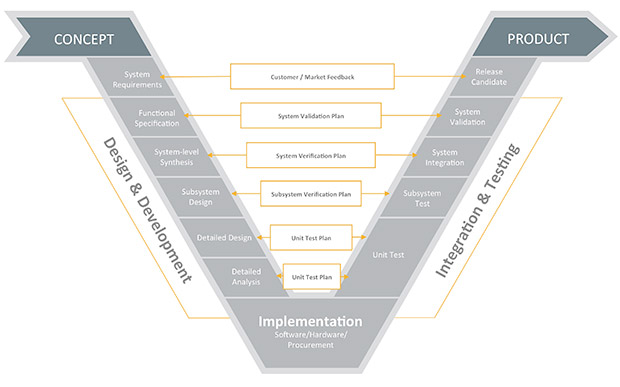A Beginner's Guide to Model-Based Development
Table Of Content

It also facilitates the integration of renewable energy sources and sustainable materials into system designs, promoting environmentally friendly solutions. MBSE can be adapted to projects of various sizes and complexities, making it a versatile approach suitable for a wide range of applications. It can also help support product development through the entire product lifecycle.
Relative density and specific surface area formula
This results in the PSO-CPU-GPU asynchronous parallel SVR model taking longer to operate at small data volumes than the PSO-SVR model. The proportion of data transfer time between the computer's main memory and GPU memory decreases gradually. As a result, the PSO-CPU-GPU asynchronous parallel SVR model is significantly more efficient. The operation efficiency of the PSO-CPU-GPU asynchronous parallel SVR algorithm increases significantly as the data scale increases. Another type of TFT foundries inspired by the Si CMOS industry uses a wafer-based substrate concept with similar wafer sizes ranging from 150 mm to 300 mm diagonal. To make this technology cost-effective, TFT technologies developed on those substrates are modestly scaled towards a few hundreds of nanometres, avoiding the use of expensive photolithography equipment.
Sequential minimal optimization
This approach provides a diverse data foundation for the model, enabling a comprehensive assessment of its performance and generalization capabilities. For missing data sequences not exceeding five hours in length, we employed linear interpolation for supplementation. Linear interpolation estimates missing data by inserting a new data point between two known values, assuming a linear change between data points.
Simulation in AI models revs up software-based auto designs - EDN
Simulation in AI models revs up software-based auto designs.
Posted: Wed, 09 Aug 2023 07:00:00 GMT [source]
What is Model-based Development?
The software components can also be simulated and tested independently of each other, or in other words separate from the larger model. Changes can be made and tested seamlessly without taking apart the entire model. Later in 2018, the DoD authored its “Digital Engineering Strategy,” advocating for the use of model-based product support models. Fast forward to 2023, we are seeing U.S. military branches incrementally championing this engineering approach.
More important than the sequence of events is the philosophy around having a digital thread that connects all elements that make up the system and shifting left the development through continuous testing. Because of the limitations of graphical tools, design engineers previously relied heavily on text-based programming and mathematical models. However, developing these models was time-consuming, and highly prone to error. As early as the 1920s two aspects of engineering, control theory and control systems, converged to make large-scale integrated systems possible. In those early days controls systems were commonly used in the industrial environment. Large process facilities started using process controllers for regulating continuous variables such as temperature, pressure, and flow rate.
Professional development
As the level shifters invert the digital signal, another inversion of inputs and outputs is done on the FPGA side. A, Measured voltage transfer characteristics of IGZO pseudo-CMOS and LTPS CMOS inverters for various VDD supplies. B, Measured power in logarithmic scale compared with input voltage of inverters.

Each thread block has Shared Memory that is visible to all threads within the block and has the same lifecycle as the thread block. Global Memory is allocated and released by the host side to initialize the data that will be processed by the GPU. Two other types of memory are read-only and accessible by all threads, Constant and Texture Memory.
TFT technologies
Certain model-based development software suites such as Ansys SCADE can auto-generate code in C, eliminating the need for writing manual code or even being fluent in C. This automation enables you to focus more resources on the functionality of the software and not so much of the tediousness of implementation. According to Ansys, utilizing SCADE can ultimately reduce costs by up to 50%. Once the architecture is in place, more detailed design of individual components begins. MBSE facilitates the simulation of system behavior, allowing engineers to test and refine their designs in a virtual environment. This helps in identifying and resolving problems before physical prototypes are built.
Deep learning annotation and segmentation
The curtaining and shadowing artifacts of the obtained tomography image data are reduced with FFT-filter69 and histogram shifting methods35,38, respectively. The SRO700 furnace is installed with an in-situ four-point probe by T.I.P.S. Messtechnik GmbH. This is used to monitor the electrical resistance of the copper pastes during sintering process. First, the probe’s four equidistant copper tips are brought into contact with the surface. Then, 1 A current is directed through the two outer probes and the voltage is measured between the inner two probes. The intensity maximum close to the origin of the graph shows negative Gs for all samples.
So, while traditional 2D design may be familiar and comfortable, it’s time for companies to embrace these new solutions and stay ahead of the curve. By shattering the limits of traditional 2D formats, engineers can unlock endless possibilities and transform the way designs are brought to life. With these advancements, designers can significantly minimize errors and improve precision, making the design process more efficient. While traditional 2D design formats have been the norm for many years, it’s essential to recognize that relying solely on these methods can have its drawbacks. There is a higher likelihood of errors, miscommunication, and inconsistencies, leading to numerous design reworks and prolonged time-to-market. Each week, our researchers write about the latest in software engineering, cybersecurity and artificial intelligence.
The first TFT technology is based on a 200-mm round wafer approach of Pragmatic offering 0.8 µm IGZO transistors with extra metallization layers to enable higher density routing. The 6502 chip was a sub-project within the single die, as indicated in Fig. The second TFT technology is a plate-based option offering 3 µm complementary LTPS transistors. The technology of PanelSemi offers a small die of GEN-3.5 TFT panels (size 620 × 750 mm2) as base modules for the multi-project approach. 1b shows the individual 6″ die that is repeated several times across the plate, in which the 6502 is present as a sub-project. More TFT-based companies are currently considering offering multi-project plates, such as LinkZill or Tianma, but those have not been studied in this work.
Komentar
Posting Komentar